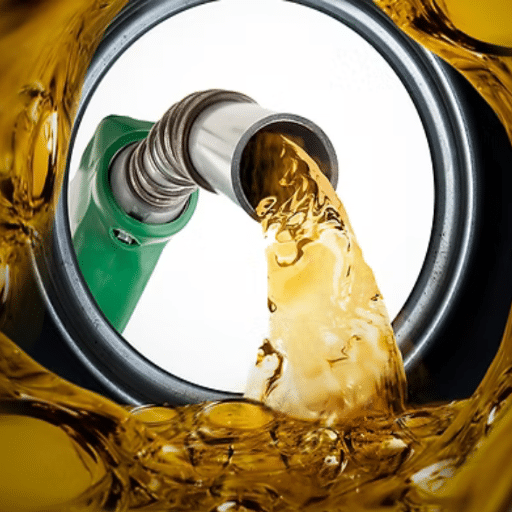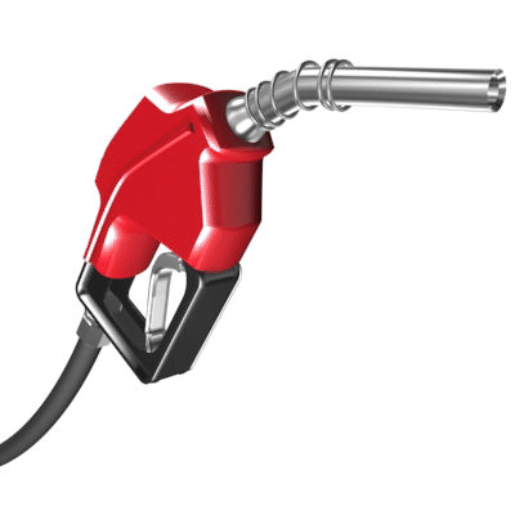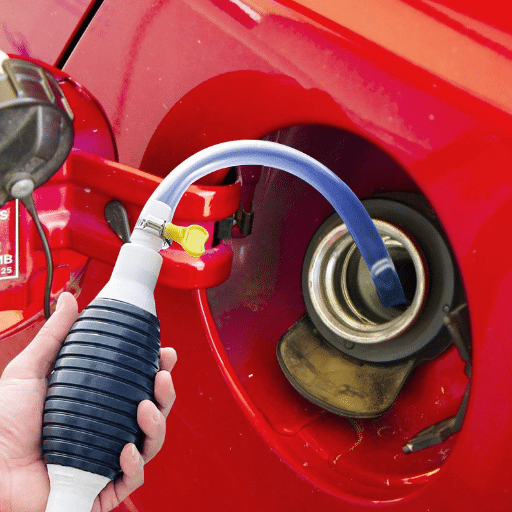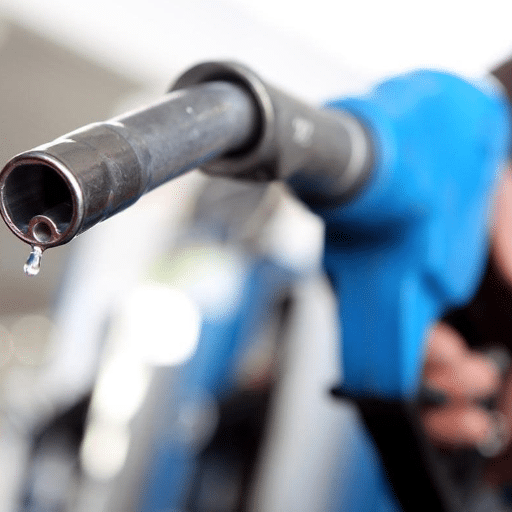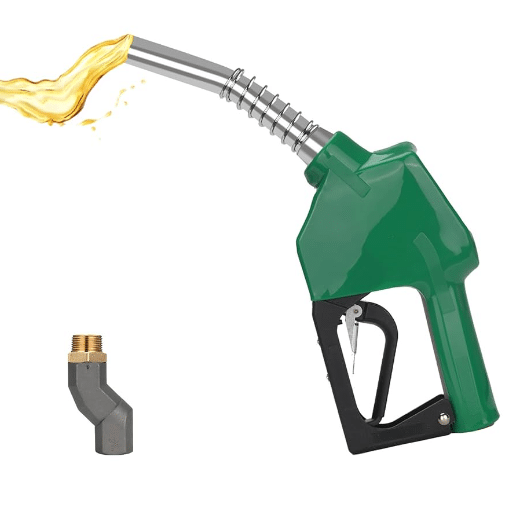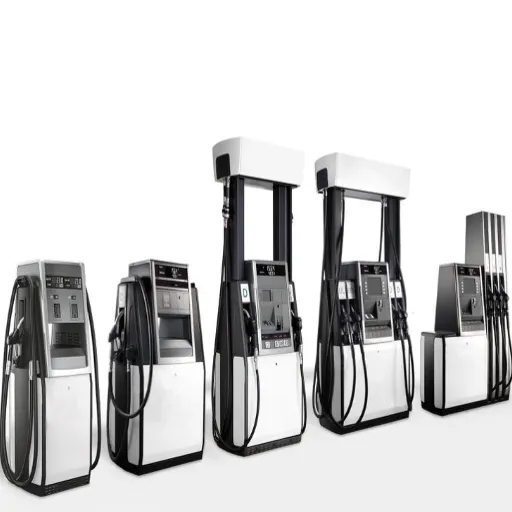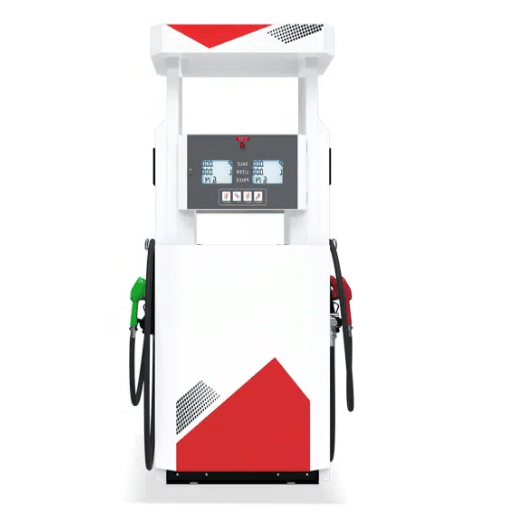It is often thought of as a very lucrative business to run a gas station, but exactly how much do station operators get for every gallon of gas they sell? This question seems simple at first, but it is a lot more complex, given wholesale fuel prices, taxes, credit card fees, operating expenses, etc. The volume of fuel sales will drive consumer traffic to the location; however, the margin of profit that generally lies with gas itself may not be as high as many store owners think. This article presents a full breakdown of how much profit is made from every gallon, considering the hidden operating factors that impact these margins and how gas stations make money once fuel sales decline. If you are curious about fuel sales economics or are considering becoming a gas station owner, this comprehensive guide will furnish you with meaningful insight into the business of keeping a gas station going.
Understanding Gasoline Profit Margins
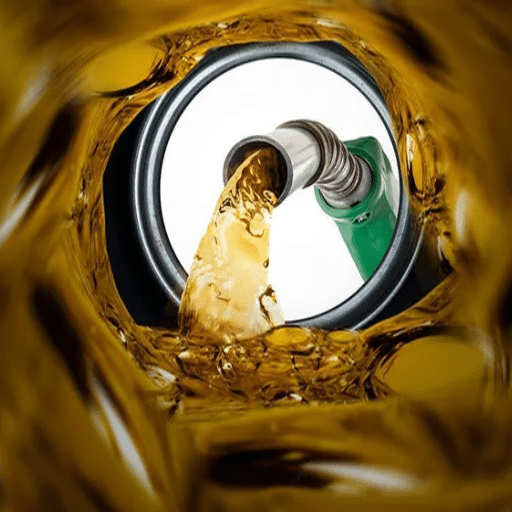
Margins of profits on gasoline sales and the exercise of gas station operation are surprisingly low-only about 10 to 15 cents a gallon. The expenses for the purchase, transport, and overheads, which include rent, utilities, and employee wages, etc., practically squeeze out net profits. It is worth mentioning here that the gross price per gallon—often about over 80%—is towards crude cost, taxes, refining, and distribution. The very slender fuel margins imply heavy reliance on profits on supplementary avenues such as sales through the convenience store, car washes, and food services.
What is the Average Profit Margin for Gas Stations?
The average profit margin on gas stations in fuel sales is very thin, typically between 1.4% and 3%. These low margins are because the illicit costs involved in crude oil, refining, distribution, and taxation take up nearly the entire retail price per gallon. To put matters further into perspective, if the average price of gas is $4.00 per gallon, the gas station might earn a net profit of only $0.05 to $0.12 per gallon.
Yet, a larger profit margin develops in the ancillary services and products associated with gas stations. Convenience store products may have profit margins of 30% to 50%, while car wash services may have margins of anywhere from 40% to 70%. Such revenues are instrumental in keeping gas stations afloat, the sustenance of which is these marginal gas sales. In that way, by capitalizing on ancillary and complementary offerings, a gas station remains viable amidst the high constraints of the market in wherein it operates.
| Revenue Source | Profit Margin |
|---|---|
| Gasoline Sales | 1.4% – 3% |
| Convenience Store Products | 30% – 50% |
| Car Wash Services | 40% – 70% |
Factors Influencing Profit Margins
Numerous factors greatly influence the profit margins in the gas station business, many of which interact dynamically with other larger market forces. Important factors include fluctuating fuel prices, different demand situations of the region, variations in operating costs, and the dynamics of competition.
Fuel Price Volatility
Differing prices occur at the time of buying crude oil, refining costs, and distribution expenses, and so these kinds of price changes directly impact profit margins. The highest increase in crude oil price in the world creates an increase in the selling cost of fuel at airports; gas stations feel compelled to delay the price hike since going price hikes are already competing, so there is a temporary margin squeeze. According to recent data, the average gross margin for gasoline sales in the United States stood at approximately 15 cents per gallon; however, once expenses such as rent, labor, and entertainment are accounted for, the net profit stands at roughly 2-5 cents per gallon.
Non-Fuel Revenue Sources
The sales of convenience stores are, in fact, quite pivotal to earnings. To name just a few, snacks, soft drinks, and cigarettes generally grant a margin between 30% and 50%. Services bearing higher profit loadings somewhat buffer against those low margins of fuel sales; car wash commissions would be one such example. An automated car wash, for instance, yields roughly $5-$10 per wash and has profit margins that can soar as high as 70%.
Operational Costs
Fixed and variable operational costs, such as labor, utilities, maintenance of the facilities, and franchise fees, all majorly affect profitability. Labor costs amount to 10-15% of total revenue; hence, these labor expenses make the need for efficient management of the workforce to remain financially sustainable.
Regional and Seasonal Variability
Demand patterns depend heavily on geographic location and seasonality factors. Normally, stations in urban areas or those close to highways observe higher traffic and can therefore sell a higher volume of fuel and products. Maximal demand is seen during summer because of holiday travelers, while in colder climates, higher sales of heating oil in winter compensate for the drop in fuel sales.
Technology and Automation
Automation-related investments, such as install-pay-at-pump and inventory management software, reduce operational costs of a station and improve station efficiency. Data evidence suggests that stations equipped with technology could reduce labor costs by almost 10%, directly affecting their profit margins.
By better managing such factors, gas station operators may enhance their operations and withstand challenging market conditions, ensuring sustainable profitability in the short and long run.
Comparison of Gasoline Prices and Profit Margins
A number of related factors establish present gasoline price levels and profit margins, such as oil prices, refining costs, distribution or marketing expenses, taxes, and competition at the local level. Crude oil prices depend on the global supply and demand situation and usually represent the greatest proportion of costs in a gallon of gasoline. The industry feels that crude oil accounts for roughly 50-60% of the price per gallon at the pump. Refining costs can vary depending upon local regulatory requirements and the degree of complexity of converting crude oil into gasoline, generally representing around 10-15% of the total price.
Another major contributor to the pricing is the taxes. Taxation levels vary widely across the various jurisdictions; some areas impose as much as 20-25% of tax on retail prices. Thin are the profit margins for independent gas station operators, maybe 1%-2% on gasoline sales because of high competition and fluctuating wholesale prices. To make more money, they usually depend on secondary sources of income such as convenience store sales, car washes, or service work, which generally pull higher margins than fuel sales. This diversification is indispensable for staying viable in an increasingly volatile fuel market.
| Price Component | Percentage of Retail Price |
|---|---|
| Crude Oil | 50% – 60% |
| Refining Costs | 10% – 15% |
| Taxes | 20% – 25% |
| Station Profit Margin | 1% – 2% |
Calculating Profit Per Gallon
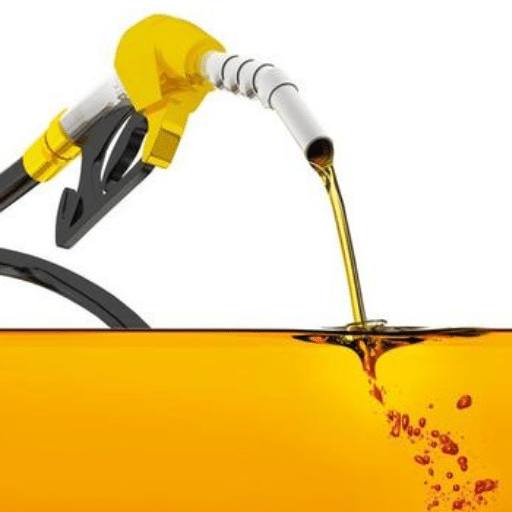
Fuel retailers make profits from an interplay of wholesale fuel prices, taxes, operational costs, and demand for their products on the market. In the United States, depending on pricing dynamics in any given region and contracts with suppliers, gas-station operators mostly make an average gross profit in the range of $0.05 to $0.15 per gallon. Such small margins indicate the heavy gravity external factors may have: on the fluctuations of crude oil prices, transportation costs from region to region, and state or federal taxes.
As an example, fuel taxes do make up a large chunk of the retail price per gallon. In 2023, the federal excise tax stands at $0.184 per gallon of gasoline plus a varying state tax, thereby creating a great regional disparity. For instance, in California, an additional state gasoline tax is charged at a rate higher than $0.50 per gallon, putting pressure on profit margins unless compensated for by volumes sold.
In addition to this, credit card transaction fees that typically hover around the 2-3% mark for the wholesale can pull down operators’ net margin per gallon, especially as the price of fuel goes up. For example, if the purchase is made for $4.00 per gallon, processing fees of $0.08 to $0.12 would be deducted.
Strategic pricing, sale of high-margin premium fuels, and other revenue streams serve to optimize profitability. Generally, premium-grade gasoline commands a premium price, and due to that niche demand, the profit per gallon yielded can go up to 50% higher than that of regular-grade fuel. The necessity of diversified sales strategies is reinforced, most so in areas with high fuel competition and tight fuel margins.
How to Determine Profit per Gallon of Gasoline
There are many factors that go into determining profit per gallon of gasoline. The total operating expenses must be calculated first; these include the cost of purchasing wholesale fuel, transportation charges, taxes, credit card transaction fees, and operating overhead, i.e., labor and utilities. Then one subtracts these costs from the retail price of gasoline to get the gross margin. For example:
Gross Margin = Retail Price per Gallon – Total Cost per Gallon
Then, one considers local variances for state and federal taxes and for competitive pricing pressures, since the profit per gallon tends to be different from one region to the other. Also, shrinkage needs to be accounted for, being that it represents losses through evaporation or theft factor, which affects reported margins. Additional sources of sales, such as snacks and car washes, compensate for narrowing gasoline profits and provide a more integrated approach to profitability analysis.
By keeping such numbers current and using them as a benchmark within the petroleum industry, a gas station operator can measure profit per gallon with precision and thus know how to orient pricing strategy and maximize profit from there.
Average Sales Volume and Its Impact on Profit
There is a direct relation between the sales volume and the profit margin of a gas station and its operational expenses; the higher the sales, the better the price points a seller can afford. A U. S. typical gas station sells somewhere between 4,000 and 5,000 gallons of gasoline on a regular day, the volumes having all the potential to slope up and down depending on location, competition, and demand. Strong volumes are needed to stay profitable as the average profit margins on a gallon of gasoline tend to be rather thin, usually ranging from $0.10 to $0.15 after deducting wholesale costs, credit card fees, and taxes.
Because stations with higher volume sales take advantage of economies of scale to spread their fixed costs, which include labor and utilities, over larger numbers of transactions, such businesses have high profit potential. On the other hand, stations that run genuinely low sales must struggle to secure sustainable profit margins, unless they diversify their revenue sources by offering ancillary services like car washes, convenience stores, or promotional deals. Keeping an eye on average sales volume will equip operators to pick up on shifts, adjust inventory management accordingly, and tailor marketing initiatives targeting the local demographic while fighting for presence in their competitive markets.
Understanding Retailer Costs and Expenses
Retailer costs and expenses entail fixed and variable elements necessary to run daily operations. Fixed costs are usually comprised of rent and property taxes, and insurance, which stay the same regardless of the quantities sold. Variable costs, in contrast, correspond to sales and comprise inventory purchase on a first basis, utilities, and wages. Another consideration affecting margin negotiation with suppliers would be shipping costs, especially for retailers relying on international supply chains. Cost efficiency can be attained mostly by eliminating inefficient procedures, negotiating favorable contracts with vendors, and improving operations through automation. Other times, keeping track of expenditures empowers the retailer to adjust prices in time to enhance margin and adapt to market changes; while strategically investing in ancillary services or digital platforms could also help offset operating expenses for sustained financial health.
Profit Margins for Different Types of Gas Stations
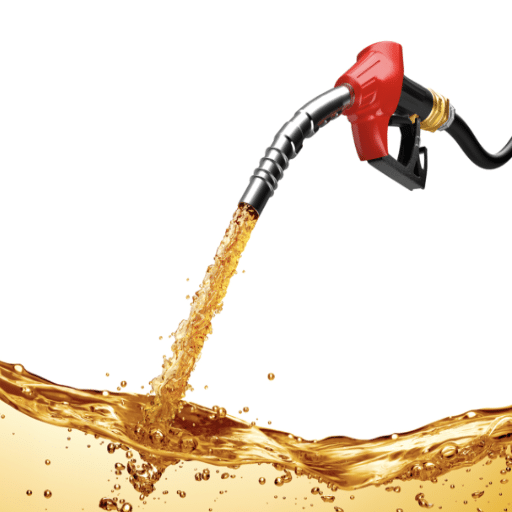
Profit margins differ widely among smaller gas stations due to the kind of business they do and the streams of revenue they rely upon. Reconciling the profits earned from selling gasoline is difficult and often a mere 1-3% margin due to operational costs and price competition. However, gas stations with other amenities such as convenience stores or car washing services garner higher profit margins, generally ranging from 15-30%. These secondary businesses enhance profitability greatly as they spread the risk and increase traffic.
Independent vs. Franchise Gas Stations
The independent gas stations are those held by and operated by one person or a small company, thus having full control over pricing, operations, and the brand image. An owner has his or her option to source fuel from any number of suppliers, hence can negotiate a cost for a competitive price. As in the case, some others that pose some challenges are the higher cost of advertisement and lower recognition of the brand by the public, which affects customer traffic.
An opposite case of franchising gas stations is that an establishment operates under an established brand name, such as Shell, Chevron, or BP. These stations benefit from brand equity, established supplier contracts, and corporate-level support, including training and marketing resources. These agreements restrict franchisees from local adaptations to the extent that pricing codes must be maintained, suppliers must remain exclusive, and profit-sharing agreements may be imposed on the franchisee. The engineering operational independence is diminished to the bare minimum by those agreements. Franchise stations do benefit from customers directed through brand loyalty and hence have better sales volumes compared to independent ones.
Fuel Retailers and Their Pricing Strategies
Fuel retailers have a set of various pricing strategies working against each other to remain competitive and to maximize profitability. Pricing is influenced chiefly by wholesale fuel price, demand, location, and competitor pricing. Many retailers use their dynamic pricing models, where prices are changed frequently with respect to changes in crude oil prices and supply and demand in different locations. Alongside this, big franchise retailers buy massive amounts at bulk rates, running down their prices much more than the smaller independent operators. Other than price, consumer behavior becomes a major factor, where some retailers use low-margin fuel prices to gain traffic and thus to increase sales in higher-margin products such as those from convenience stores. Strongly localized levels of competition often force a compromise between profitability and customers’ loyalty and market share.
The Role of Location in Profitability
Location represents probably the prime determinant of profitability for the retailing of fuels. Inasmuch as a station set up near a highway, an urban center, or any other area with higher traffic flow would invite many customers and ultimately witness more fuel transactions, to the ancillary revenues from convenience store products, a firm must set a strategic price concerning its competitors. A competitive area with probably an aggressive price-matching rubbering on the exit wells only results in narrower profit margins. Conversely, rural or more remote locations might get away with a slightly higher price but often have lower overall volumes due to traffic flow.
Access and entrance, though, are very important factors to consider. Any service stations with proper entry and exit points or facilities such as car washes and food outlets are going to grab a wider customer base. Demographics are also very important as areas of a higher income level would imply an increase in discretionary spending on either premium fuel or goods; therefore, a strategic approach to site selection, driven by data, is key to achieving profitability in the retail fuel space in the long term.
Insights for Gas Station Owners
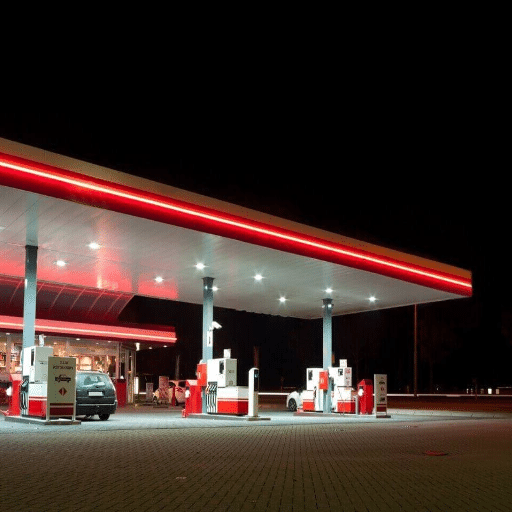
Understanding the preferences and habits of target customers is the topmost thing for sales optimization and better customer retention by gas station owners. For instance, fuel pricing discount offers, loyalty offers, or simply a good inventory of convenience store items really can explain the repeat business of a customer. Along with a fine reputation, it continues to make an immaculate station with streetlights and security for customer satisfaction and confidence. Keeping an eye on the nearness of traffic and rush hours will assist in setting the station’s working time and therefore profit in rush hours.
Maximizing Profit Margins as a Station Owner
With profit margins to maximize, an owner must adopt multidimensional approaches integrating operational efficiency, marketing strategies, and the latest trends in technologies. One exploit of dynamic pricing models would be price discrimination. For instance, it is found that by pricing fuel with real-time market changes or competitors’ price changes, sales of fuel can increase by 10% during periods of high demand. Software that pays attention to market fluctuations allows the user to analyze and react to price changes swiftly and well.
Investment in alternative revenue streams is also a critical one. Convenience stores contribute huge sales to overall profits; in most cases, they account for some 30%–40% of a station’s income. More profits can be made by carrying products with good margins for snacks, beverages, and basic automotive needs. They can also attract more customers and add alternative revenue sources to the station by adding car washes, air dispensers, or electric vehicle charging stations.
An important element in this regard is the management of operating costs. Energy-efficient lighting, less water use for car washes, and timely maintenance of machinery of these independently can bring overhead down by 15%. Granted, the other direction, employing technology to cut costs (smart thermostats, solar panels, etc.), mutually contributes, albeit incrementally, toward cost savings accumulated over time, thereby enhancing net margins.
Then, customer retention and brand loyalty come into the picture. It is found that loyalty programs offering discounts or incentives for frequent visits increase retention of customers by more than 20%. Combined with digital advertising campaigns towards the local demographics, these programs can create high visibility for the brand and ensure sustained revenues.
When combined with an analytic approach and evaluation of ongoing performance, a station owner can foresee a sustainable business model with enhanced revenue potential.
Common Challenges Faced by Fuel Retailers
The Fluctuating Prices of Fuel
Prices of fuel generally remain volatile; consequently, retailers find it difficult to sell fuel in the market. Price fluctuations result from varied factors: from global market happenings, geopolitical tensions, to crude oil production changes in various countries. When prices face sudden fluctuations, profit margins get eroded, and demand forecasting becomes a subject matter of speculation.
Evolving Consumer Preferences
But the big disruption besieging the fuel retailing industry is the march toward electric vehicles and alternative energy sources, thereby reducing the dependency on traditional fossil-fuel products. To stay ahead, retailers must re-engineer their business models to incorporate either EV charge points or renewable energy solutions.
Competitive Market Conditions
The refining retailing market is considered highly competitive, with big players jostling for market share along with the local establishments. It, therefore, becomes imperative to price competitively or offer added-value services such as loyalty schemes or enhanced services in convenience stores.
Operational Costs and Efficiency
Operational expenses come in the form of logistics, maintenance, and regulations, eventually applying last-mile pressure on profitability. To maintain their business margins, fuel retailers must invest in state-of-the-art management systems and data analysis tools to increase operational efficacy and supply-chain planning.
Regulatory Compliance
The need to comply with environmental legislation and safety laws is a major difficulty. Hefty fines, black marks on the reputation, or outright operational shutdowns could accrue for a non-compliant retailer, so there must be continuous evaluation of standards and compliance and adaptation thereto as changes occur.
Moving beyond these challenges through innovative solutions and sound strategic planning would position the fuel retailers for durable growth despite an ever-changing industry landscape.
Strategies for Increasing Gasoline Sales
Price Optimization
Dynamic pricing models can be developed to attract price-conscious drivers and maintain competitiveness. Sellers can analyze competitors’ offering prices, along with data on consumer behavior, to increase their own prices or decrease prices to capture higher foot traffic, balancing contrary objectives of profit margin maximization and foot traffic maximization.
Better Experience
Giving customers great service at the pumps and inside the store earns customer loyalty. Loyalty programs, mobile payment options, and clean and well-maintained facilities boost customer satisfaction levels. Bundling fuel with convenience store products can also promote larger sales.
Leverage Location and Visibility
Strategically locating stations in areas where traffic is heavy or near the main road networks means higher visibility and accessibility. Clear signage for the station, promotional billboards, or even adverts in online maps can keep the location in public view; thereby, transient customers and local visitors are always at the beck and call.
Promotions for Alternative Revenue Streams
Additional services, such as car washes, electric charging stations, and quick-service restaurants, offer opportunities for revenue diversification while driving secondary sales and converting non-fuel customers into repeat buying customers.
Online Marketing and Promotions
An increased online presence and promotions can drive sales. Social media, email marketing, and search engine marketing enable customer engagement, advertising of fuel discounts, and brand reinforcement. Rewards tied to apps or programs stimulate brand recognition and repeat customer visits.
Multifaceted approaches involving some or all of these strategies are used by fuel retail companies to tackle ever-rising challenges in the market and to keep their profitability in an increasingly competitive and evolving industry.
How Can Gas Stations Increase Their Profit Margins?
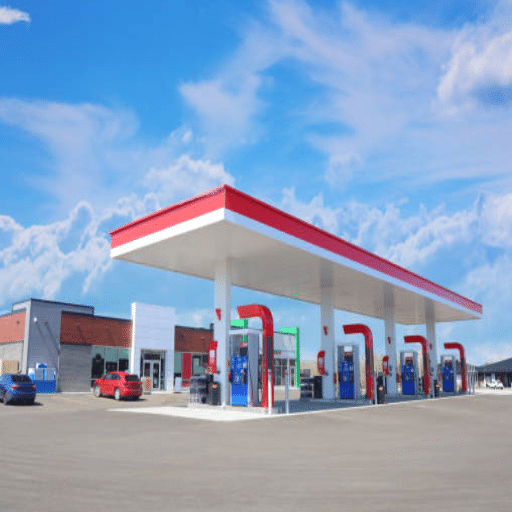
If thought of from a gas-station operations point of view, one could say that profits could be increased by placing emphasis on high-margin services and products. A greater selection of convenient items for snacks, beverages, or prepared foods draws in more dry and wet customers alike, thereby generating greater revenues than fuel sales alone. Having a loyalty program promotes repeat patronage, while car washes, tire air stations, etc., can be carefully priced to generate useful secondary income streams. Inventory management and trim operations costs, such as energy and equipment maintenance, all add to profitability. Good clean experience, courtesy service, and further squeeze all-in loyalty-building converts into sales.
What Affects the Price of Gasoline?
Numerous factors, ranging from worldwide ones to local ones, govern the price of gasoline. First and foremost, gasoline prices largely depend on the price of crude oil; the end price of gasoline varies with how crude oil prices respond to geopolitical tensions, demand and supply situations, and production level decisions by a cartel called OPEC. Refining costs and profit margins yet again determine pricing; the cost of refining is tied to the complexity of the refinery, while local fuel standards also influence the final price. Distribution and marketing expenses are involved as well, including the cost of trucking the fuel to retail terminals, operational costs at the retail end, and promotional expenses. Taxes, both federal and state, contribute extensively, even though these vary from one region to another. There is some intensity in competition among gas stations locally, and with demand shifting between seasons, prices can work their way up and down. Then there are external factors, such as natural disasters or internal disruptions within the supply chain, that might raise the prices for some time due to hindrances in either the functioning of refineries or in the channels that distribute fuel.
What Should Consumers Know About Gas Prices?
The factors affecting gasoline prices are global, national, and local. Understanding these elements may help me become a better decision-maker as a consumer. I do know that crude oil prices are the main factor, because that is nearly 75% of the price I pay for fuel at gas stations. Although I consider all incremental costs, such as refining costs, taxes, and distribution, for that matter, to arrive at the ultimate price, from the beginning, price fluctuations could arise from slight changes in demand during seasons or supply disruptions as a consequence of, say, hurricanes. Staying in the know would better allow me to make an informed estimate of fuel allocation and pick out cheaper choices whenever possible.
Reference Sources
Gasoline and diesel usage and pricing
Frequently Asked Questions (FAQs)
What is the average profit margin that a gas station can make per sale of a gallon of gasoline?
The average profit margin for gas stations usually hovers somewhere between 10 and 20 cents per gallon, but this can fluctuate due to factors such as wholesale gasoline prices and competition within the local market. Gasoline margins can be extremely volatile and are dependent upon the fluctuations of oil markets and refinery costs.
How do retail gasoline prices influence gas station profits?
Retail gasoline prices have a direct impact on gas station profits. High prices often mean better profit margins for each gallon of gasoline sold. But a rise in wholesale prices might push the cost of gasoline up sufficiently that retailers are forced to squeeze their profit margins to keep the consumers happy.
What is the role of an oil company in gas station profitability?
Gasoline companies considerably influence the profitability of gas stations through the wholesale price of gasoline, delivered at a price whereby stations must pay for their purchases of fuel. Therefore, due to fluctuations in oil market prices, there can be changes in retail gasoline prices, finally affect the bottom lines of station owners.
How can gas station owners increase profits during shortages?
During shortages, gas station owners may increase profits by modifying their price structure. Price increases may be implemented where laws allow, so as not to be accused of price gouging. Meanwhile, they may improve customer service or offer loyalty programs to attract customers, thus increasing their sales volume.
What has been the impact of the pandemic on the profit margins of gas stations?
The pandemic caused significant disruptions in the supply lines of gasoline, creating thin margins in many gas stations. Lockdowns brought down demand, and retailers had to start modifying their business strategies so that they could still make a real profit. With the market awakening, the profit margins are now slowly stabilizing, but are not yet restrained by other exterior factors.
How do gasoline supply issues affect prices at the pump?
Supply of gasoline causes pumps to seek higher charges when retailers are confronted with higher wholesale prices. Constrained supply—be it due to natural phenomena or some geopolitical tensions—will cause a spike in gas prices, thus squeezing the profit margins for gas stations and, in effect, raising retail gasoline prices.
What insight about gas station profitability can Jeff Lenard provide?
Jeff Lenard, a NACS representative, stressed the need to understand “gasoline margins and market dynamics.” In his opinion, gas station owners “should keep abreast of oil market trends and incorporate those changing dynamics into the way they run their businesses so that they are maximizing their profitability.”
How do supermarkets compete with gas stations for fuel sales?
Supermarkets compete with gas stations for customers by discounting fuel purchases with the purchase of goods in-store. This method decreases customer traffic in supermarkets and, in turn, affects the profits of some gas stations nearby. Fuel retailers must develop ways to differentiate their offerings if they want to nurture customer loyalty for their stores.

